History of Decline and Fall of the Mighty Roman Empire
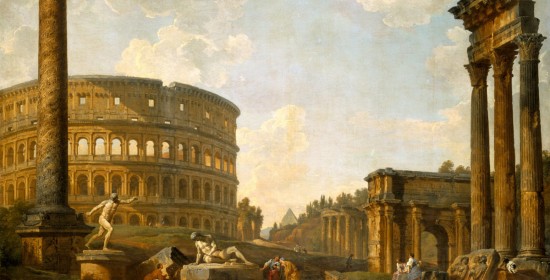
Welcome to Stefano Rome Tours, where we embark on a captivating journey through time to explore the echoes of a once-mighty empire—the Roman Empire. As our Rome private tours take you to many remarkable landmarks of Ancient Rome such as the Colosseum, Roman Forum, and Pantheon, let's find out what caused the mighty Roman Empire to fall.
In our blog, "Echoes of Empire: History of Decline and Fall of the Mighty Roman Empire," we delve into the captivating tale of Rome's gradual decline and its ultimate fall, leaving behind a profound impact on the world.
At StefanoRomeTours, we are passionate about providing extraordinary experiences that go beyond the digital realm. Our private Rome tours and Rome Shore Excursions from Civitavecchia offer you the opportunity to witness firsthand the vestiges of Ancient Rome. Accompanied by our knowledgeable drivers, you will explore iconic landmarks and hidden gems, marveling at the remnants of this once-mighty empire.
Rome was the capital of an empire that once stood as a beacon of power, renowned for its prowess in warfare, the marvels of architecture, the ingenuity of engineering, the advancements in medicine, and the elegance of mathematics. Yet, as the wheels of time turned relentlessly, the mighty edifice crumbled, and this bastion of enlightenment descended into the abyss of ignorance and complacency. Where once-grand marble palaces adorned the landscape, now meager huts of delicate wood and humble thatch roofs sheltered the populace.
The Roman Empire, known for its grandeur and influence, stood as a colossal power in the ancient world. However, this mighty empire faced a gradual decline that ultimately led to its fall. Spanning several centuries, this complex process was shaped by a multitude of factors, both internal and external.
In this blog, we will embark on a historical journey, exploring the 8 key events and underlying causes that contributed to the decline and fall of the Roman Empire:
- The Crisis of the Third Century: Delve into this turbulent period marked by weak emperors, political instability, and external invasions. This era of turmoil set the stage for subsequent challenges that would further weaken the empire's foundations.
- Barbarian Invasions: Learn how relentless pressure from barbarian invasions plagued the Roman Empire. Germanic tribes, such as the Visigoths, Ostrogoths, Vandals, and Lombards, encroached upon Roman territories, straining the empire's military capabilities and exposing its vulnerable borders.
- Economic Struggles: Examine how excessive taxation, inflation, devaluation of currency, disruption of trade routes, and a declining agricultural sector that burdened the populace contributed to the Empire’s decline.
- Political Decay and Corruption: Discover how the erosion of political institutions weakened the empire's ability to govern effectively, with the Praetorian Guard often playing a pivotal role in political assassinations and the appointment of new rulers.
- Military Decline: Gain insight into how the once formidable Roman military experienced a gradual decline, characterized by the loss of discipline and cohesion.
- Division of the Empire: Find out how Emperor Diocletian's reign witnessed the division of the empire into the Western Roman Empire and the Eastern Roman Empire and how this division weakened the empire as a whole.
- Cultural and Religious Shifts: Learn about how the rise of Christianity challenged traditional Roman polytheism, leading to internal conflicts and divisions within the empire.
- External Threats: Discover the external threats from the Sassanian Empire in Persia to the Huns under Attila draining the empire's resources and further weakening its defenses.
Echoes of Empire: History of Decline and Fall
of the Mighty Roman Empire
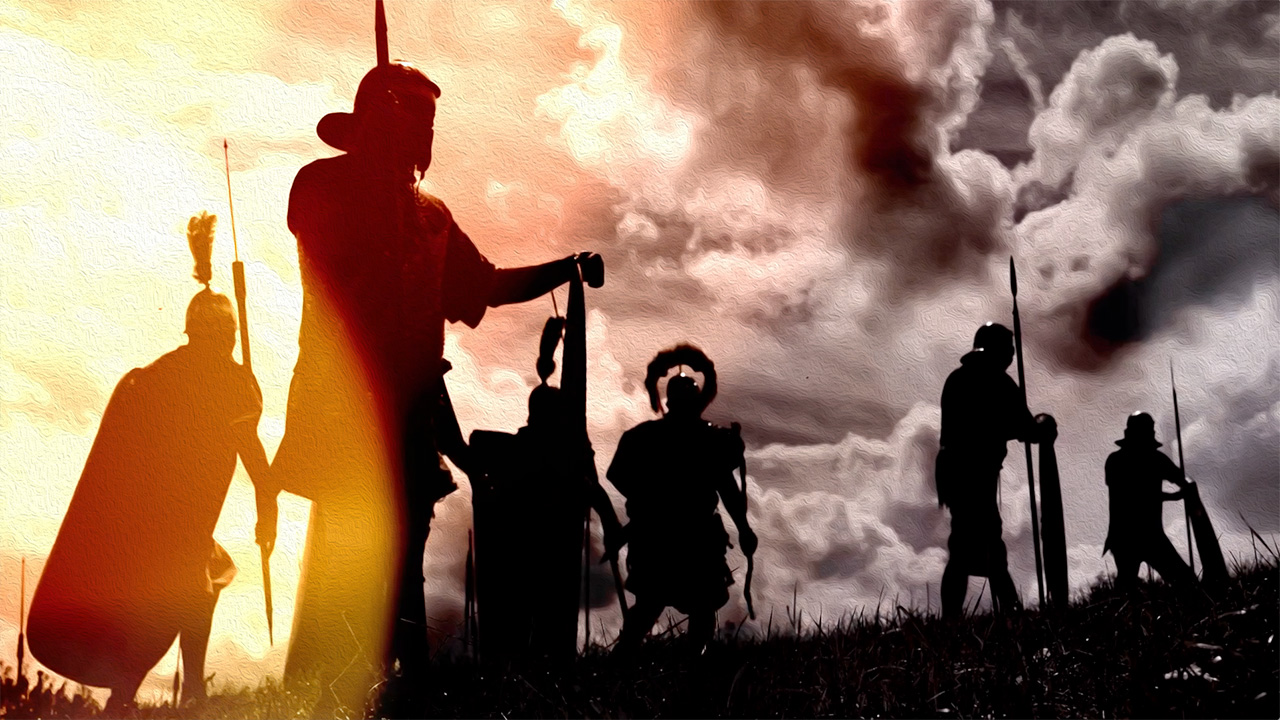
The Crisis of the Third Century
The Crisis of the Third Century, spanning from 235 to 284 CE, stands as a pivotal period in Roman history, marked by a series of unprecedented challenges and upheavals. It was a time of profound political instability, military conflict, economic crises, and external invasions that deeply shook the foundations of the Roman Empire.
One of the defining characteristics of this crisis was the rapid succession of weak emperors. The imperial throne became a target for ambitious military commanders who sought power and control. The emperors of this era were frequently overthrown or assassinated, leading to a chaotic and volatile political landscape. The instability at the top echelons of power exacerbated the already precarious situation.
The Crisis of the Third Century also witnessed a breakdown in the traditional structure of the Roman military. The once mighty legions, renowned for their discipline and effectiveness, became fragmented and prone to internal rivalries. Various military commanders, known as "soldier-emperors," emerged and competed for control, often leading their troops against one another. This internal strife weakened the central authority and left the empire vulnerable to external threats.
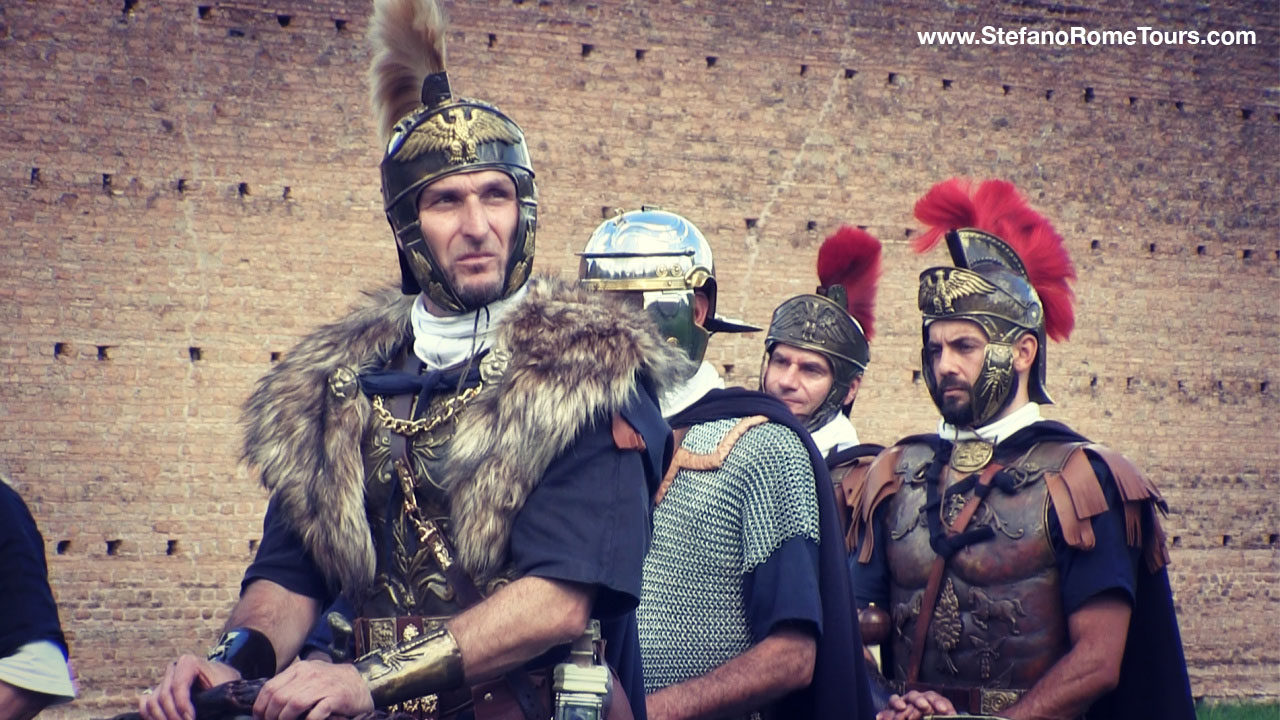
External invasions posed a significant challenge during this period. Germanic tribes, such as the Goths and Vandals, launched incursions into Roman territories, exploiting the empire's weakened state. The Roman borders, once thought impenetrable, crumbled under the pressure of these invasions. The empire struggled to repel the onslaught, and vast stretches of territory were lost.
Furthermore, economic crises plagued the empire during the Crisis of the Third Century. The constant warfare, political instability, and rampant inflation took a toll on the Roman economy. The disruption of trade routes and the debasement of currency led to a decline in agricultural productivity and a shortage of goods. The overall decline in economic prosperity further contributed to the empire's struggles.
However, despite the turmoil and challenges, the Crisis of the Third Century also sparked important transformations. Reforms were implemented in the military, administration, and economy to address the empire's vulnerabilities. These changes would lay the groundwork for the subsequent reorganization and stabilization of the Roman Empire under the Diocletianic and Constantine reforms.
The Crisis of the Third Century serves as a cautionary tale in Roman history, illustrating the perils of political instability, weak leadership, and external pressures. It is a crucial chapter that sheds light on the complexities and challenges that ultimately shaped the decline and fall of the mighty Roman Empire.
Barbarian Invasions:
The barbarian invasions played a significant role in the decline and fall of the Roman Empire, testing the empire's military strength, straining its resources, and exposing the vulnerabilities of its borders.
The Germanic tribes, including the Visigoths, Ostrogoths, Vandals, and Lombards, gradually migrated into Roman territories during the late Roman period. Pressured by the Huns, a powerful nomadic group from the east, these tribes sought refuge within the borders of the empire. However, their arrival brought about a series of challenges that the Roman Empire was ill-prepared to handle.
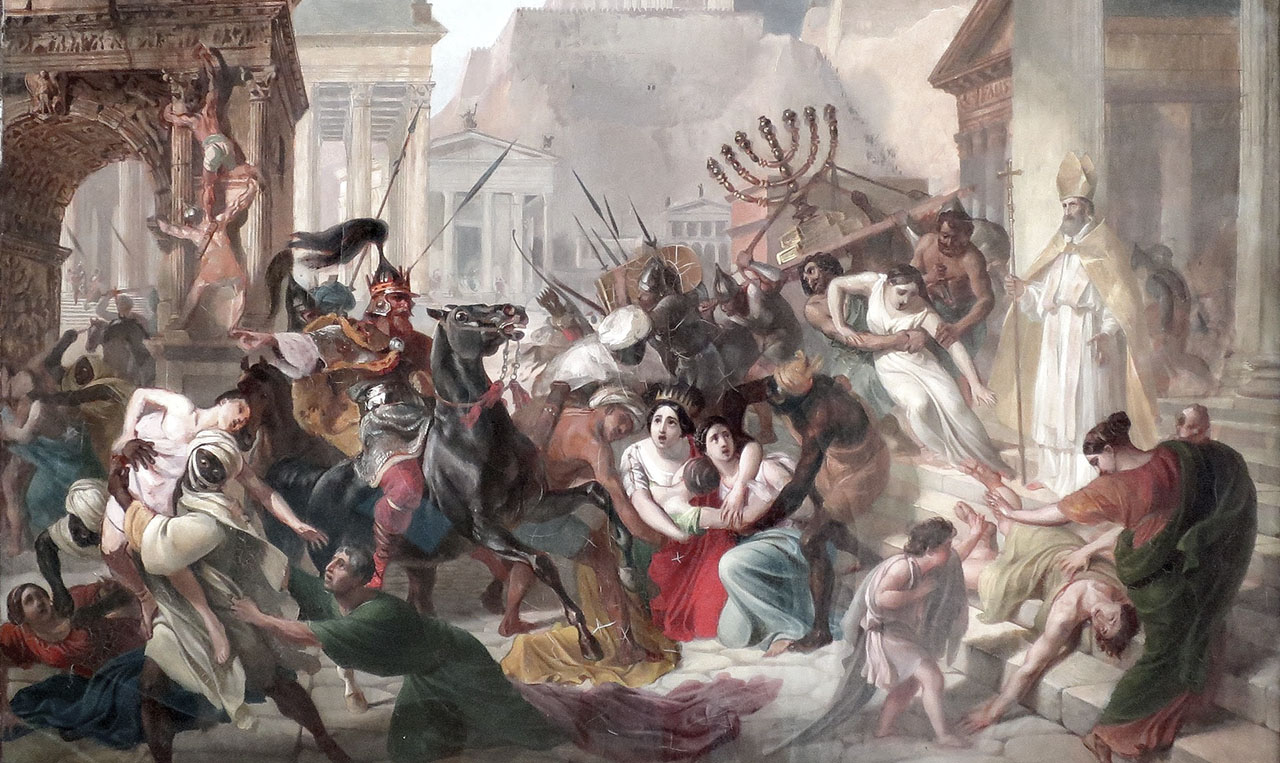
One of the most significant invasions occurred in 410 CE when the Visigoths, under the leadership of Alaric (the first king of the Visigoths and previous Roman soldier under Roman Emperor Theodosius), successfully sacked the city of Rome. This event sent shockwaves throughout the empire, as it marked the first time in over 800 years that the eternal city had been captured by an enemy force.
The Vandals, another Germanic tribe, further weakened the empire's position when they sacked Rome in 455 CE. Led by King Genseric, the Vandals looted the city, leaving destruction in their wake. These repeated sackings of Rome were not only damaging to the physical city but also dealt a blow to the psychological and symbolic power of the Roman Empire.
The barbarian invasions put immense pressure on the Roman military. The empire struggled to effectively defend its vast borders from the constant influx of invading tribes. The fragmented and politically unstable state of the empire during this period hindered its ability to mount a unified defense. The Roman army, already stretched thin due to internal conflicts and a declining population, faced challenges in repelling the invasions.
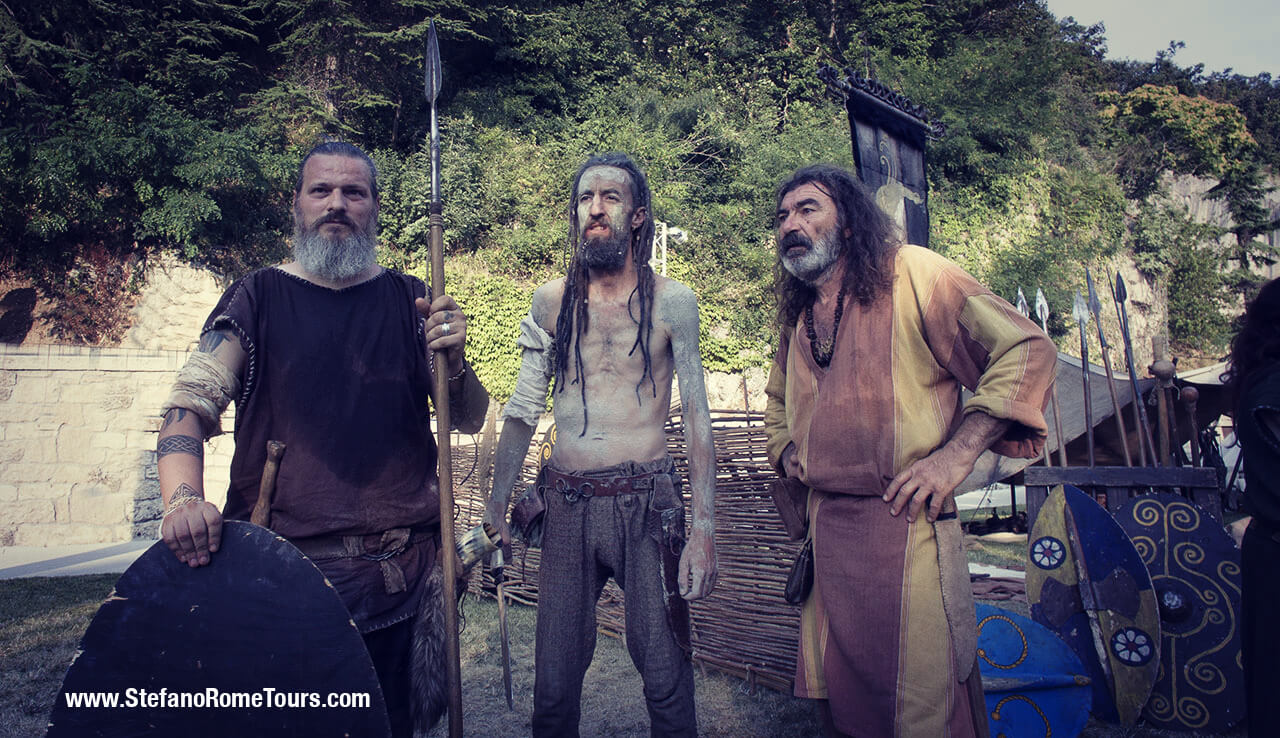
The invasions also exposed the vulnerabilities of the Roman Empire's borders. The Roman defensive system, once renowned for its strength and fortifications, proved insufficient against the determined and migrating barbarian tribes. The Romans faced difficulties in maintaining control over their expansive territories, as their forces were often spread thinly across vast regions.
Furthermore, the barbarian invasions contributed to a shift in power dynamics within the empire. As the Roman army struggled to contain the invasions, some Germanic tribes were eventually accommodated within Roman territories through negotiated settlements. The Visigoths, for example, were granted land within the empire and became foederati (allies) of the Roman state. These arrangements blurred the lines between the invaders and the Roman Empire, leading to further political complexities.
Economic Struggles:
During the decline of the Roman Empire, economic struggles played a significant role in weakening the empire's foundations and exacerbating its decline. Various factors, including excessive taxation, inflation, and a declining agricultural sector, contributed to economic turmoil and societal discontent.
One of the primary issues was the burden of excessive taxation. As the empire faced mounting challenges, including external invasions and internal conflicts, the need for resources and revenue grew exponentially. The tax burden on the population, particularly the middle and lower classes, became increasingly heavy. Excessive taxation led to a decrease in disposable income, hindering economic growth and placing strain on the livelihoods of the citizens.
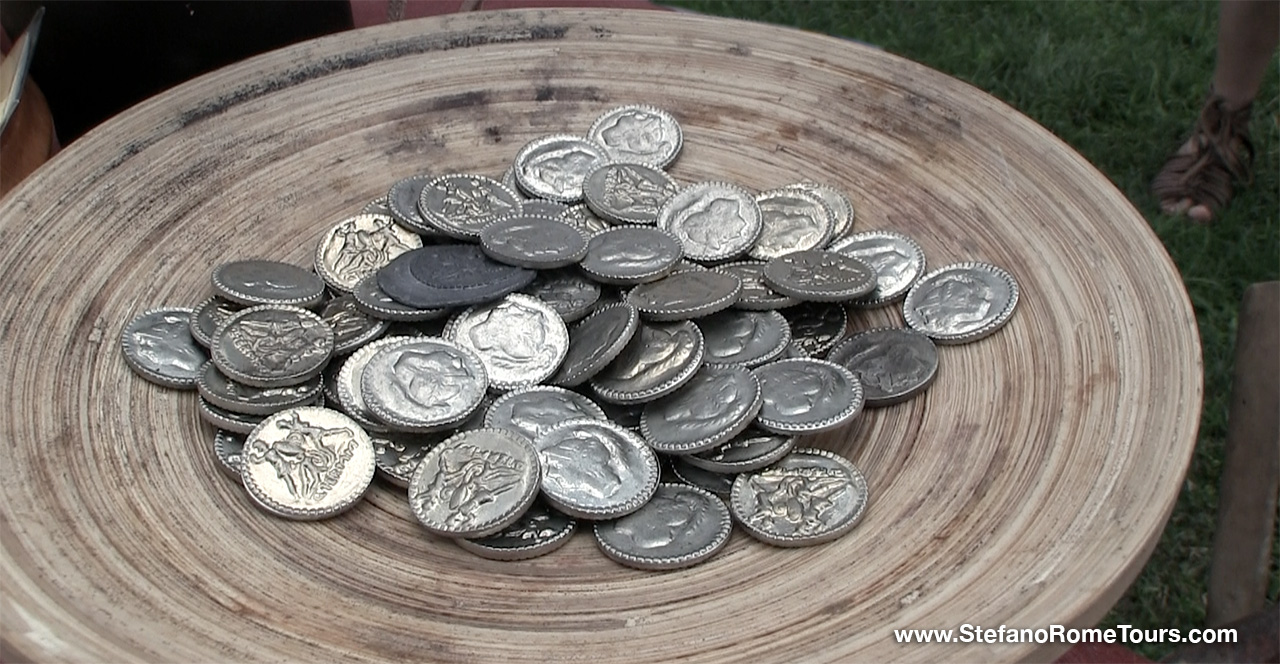
Inflation was another pressing economic challenge during this period. The debasement of the currency, whereby the value of coins decreased while their nominal value remained the same, led to rampant inflation. This devaluation of the currency caused prices to rise rapidly, eroding the purchasing power of the population. As a result, individuals and communities struggled to meet their basic needs, exacerbating social unrest and dissatisfaction.
The agricultural sector, which had long been a pillar of the Roman economy, also faced significant challenges. Declining agricultural productivity, coupled with the disruption caused by barbarian invasions, contributed to a decline in food production. As the empire's borders were breached and territories were lost, agricultural land and productive farms fell under the control of invading tribes. This disruption to the agricultural sector led to food shortages, rising prices, and an increased dependency on imported goods.
The disruption of trade routes due to barbarian invasions further undermined the empire's economic stability. The Roman Empire relied heavily on trade networks and the exchange of goods and resources to sustain its economy. However, with the invasion and occupation of territories, trade routes were disrupted, and commerce diminished. The flow of goods and resources was hindered, contributing to economic stagnation and a loss of prosperity.

The economic struggles of the Roman Empire during its decline had significant social and political ramifications. Economic uncertainty and hardships fueled discontent among the population and eroded the trust and confidence in the state. The declining living conditions, coupled with the heavy tax burden and inflation, contributed to social unrest and a loss of faith in the central authority.
These economic challenges further weakened the already fragile state of the empire, making it increasingly difficult to maintain control over its vast territories and fend off external threats. The economic struggles of the Roman Empire were intertwined with its political and military decline, ultimately contributing to the disintegration of the Western Roman Empire and the transition to a new era in European history.
Political Decay and Corruption:
Political decay and corruption were significant factors contributing to the decline of the Roman Empire. In the final centuries of its existence, the empire witnessed a gradual erosion of political institutions, with power becoming concentrated within the imperial court.
As the empire expanded, the role of the emperor evolved from being a primarily military leader to a central figure in political governance. However, this concentration of power within the imperial court opened the door to corruption and manipulation. Influential factions and military leaders sought to control the emperor, often reducing them to mere puppets. This dynamic undermined the authority of the central government and created a climate of instability and uncertainty.
One notable example of this political decay was the Praetorian Guard. Originally established as the personal bodyguard of the emperor, the Praetorian Guard gradually gained significant political influence. Over time, they became involved in political intrigues and frequently meddled in the appointment and deposition of emperors. Their power and control over the imperial succession often led to a state of constant uncertainty, as emperors could be deposed or assassinated at the whims of the Praetorian Guard.
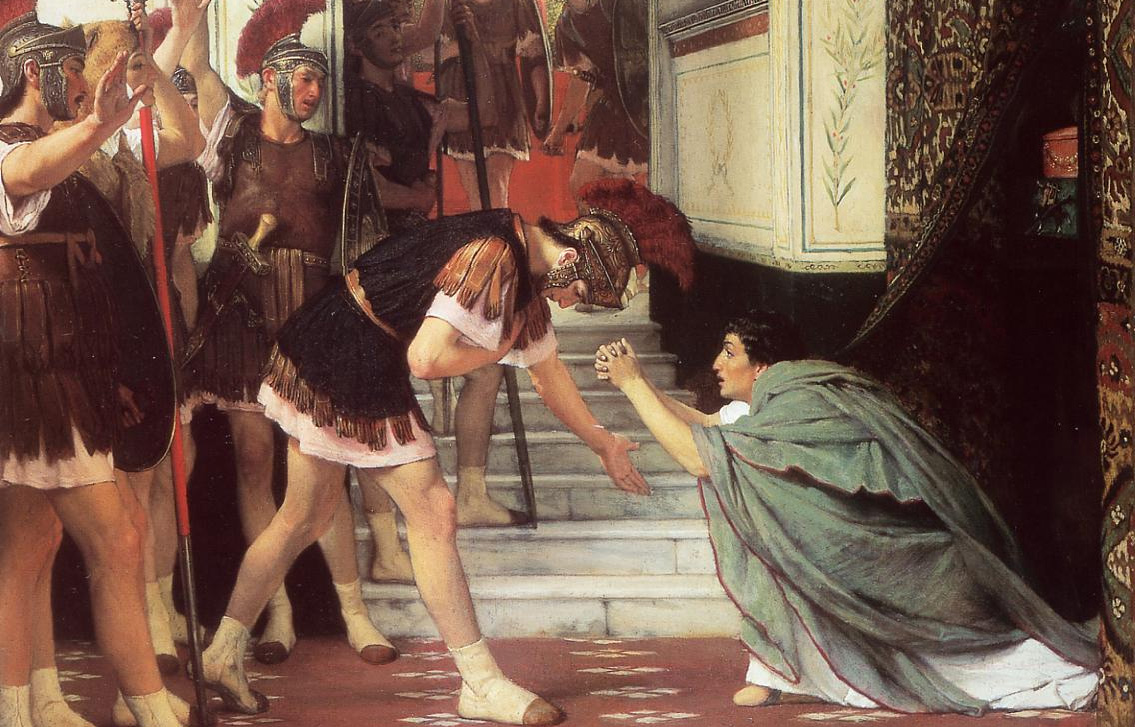
The political system of the Roman Empire also suffered from rampant corruption. Bureaucrats and officials within the imperial administration used their positions for personal gain, engaging in bribery, embezzlement, and nepotism. The pursuit of wealth and personal interests took precedence over the well-being and stability of the empire. This culture of corruption undermined the effectiveness of governance and eroded public trust in the state.
Furthermore, as the empire expanded, it became increasingly difficult to govern such vast territories effectively. Regional power structures and local elites emerged, often challenging the authority of the central government. These internal divisions weakened the empire's ability to respond cohesively to external threats and further eroded its political unity.
The decline in political institutions and the pervasive corruption within the Roman Empire had far-reaching consequences. The erosion of political authority and the manipulation of imperial power created a climate of instability and uncertainty. The constant struggle for power among factions and military leaders weakened the central government's ability to effectively govern and defend the empire.
The decline of political institutions and the influence of corrupt practices were intrinsically linked to the broader decline and fall of the Roman Empire. The erosion of political stability, coupled with external pressures and economic struggles, contributed to the disintegration of the empire and the subsequent transition to the medieval period in Europe.
Military Decline:
The decline of the Roman military was a significant contributing factor to the overall decline and fall of the Roman Empire. Once renowned for its disciplined and formidable legions, the military gradually lost its effectiveness and became increasingly vulnerable to external threats.
One key factor in the military decline was the empire's reliance on foreign mercenaries. As the empire expanded, the need for additional troops grew. To meet this demand, the Romans increasingly turned to recruit foreign soldiers, particularly from Germanic tribes and other conquered territories. While these mercenaries provided immediate manpower, they often lacked the loyalty, discipline, and training that had characterized the Roman legions in their prime. The integration of these foreign soldiers weakened the cohesion and effectiveness of the military forces, as their motivations and allegiances were not always aligned with the Roman Empire's best interests.
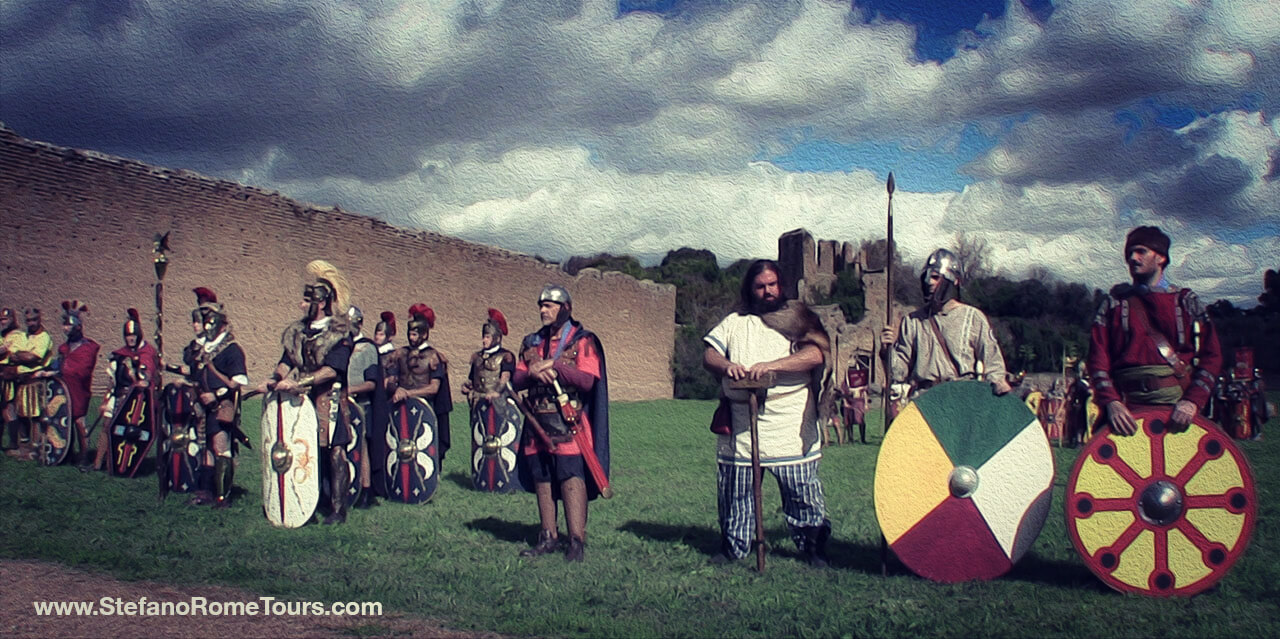
The vastness of the Roman Empire presented a significant challenge to its military defense. With its extensive borders stretching from Britannia to the Middle East, the empire faced the daunting task of defending its territories from external threats. The empire's size and diverse frontiers made it increasingly challenging to maintain a proactive military presence across all regions. The Romans had to allocate their resources strategically, often leaving some areas vulnerable to invasion.
As a result, defensive fortifications played a more prominent role in the empire's military strategy. One notable example is Hadrian's Wall in Britannia, constructed during the reign of Emperor Hadrian in the 2nd century CE. This massive stone wall stretched across northern Britain, serving as a defensive barrier against the Pictish tribes from present-day Scotland. Such fortifications represented a shift from proactive military campaigns to a more defensive stance, as the Romans focused on securing their borders rather than pursuing expansion.
The defensive approach, while initially effective in repelling attacks, also signaled a decline in the Roman military's ability to project power and maintain control beyond their borders. The reliance on fortifications and defensive strategies limited the empire's ability to actively counter external threats and address the underlying issues that were contributing to its decline.
Barbarian attacks became a persistent challenge for the Roman military during this period. Germanic tribes, such as the Visigoths, Ostrogoths, Vandals, and Lombards, capitalized on the empire's vulnerabilities and launched incursions into Roman territories. These barbarian attacks exploited weaknesses in the Roman military and further highlighted its decline.
Division of the Empire:
The division of the Roman Empire during the reign of Emperor Diocletian marked a pivotal moment in its history. In an attempt to address the challenges faced by the empire, Diocletian implemented significant administrative and territorial reforms, ultimately leading to the division of the empire into the Western Roman Empire and the Eastern Roman Empire.
Diocletian's reign, which lasted from 284 to 305 CE, was characterized by a series of ambitious reforms aimed at restoring stability and strengthening the empire. Recognizing the vastness of the empire and the difficulties of governing such a vast territory from a single location, Diocletian decided to divide the empire into two administrative regions, each with its own emperor.
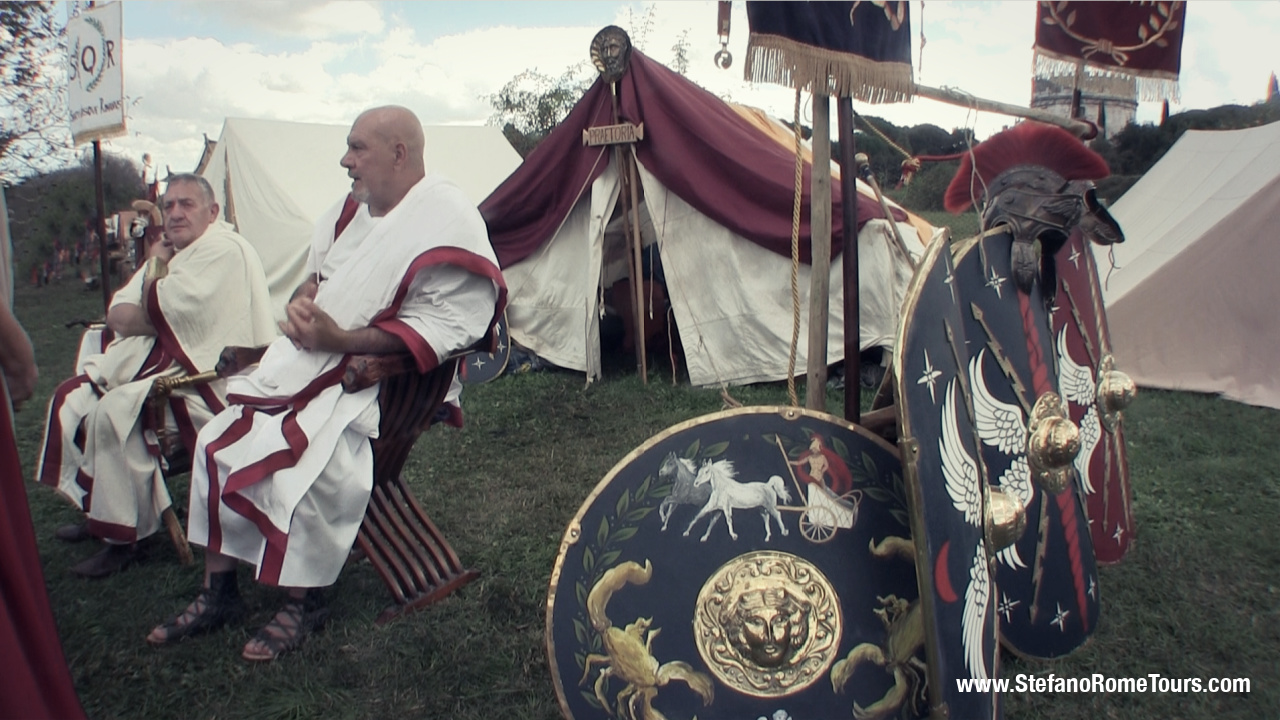
The Western Roman Empire was centered in Rome, while the Eastern Roman Empire had its capital in Constantinople (formerly known as Byzantium). This division aimed to improve governance and administration by allowing each emperor to focus on the affairs of their respective regions. It also acknowledged the growing significance of the eastern provinces and the need to protect them from external threats.
While the division was initially intended to strengthen the empire, it ultimately weakened it. The division created a sense of separation between the two regions, leading to increased regionalism and a growing divergence in interests and priorities. The Western Roman Empire, burdened with economic and military challenges, struggled to maintain its stability and faced constant threats from barbarian invasions.
On the other hand, the Eastern Roman Empire, known as the Byzantine Empire, proved more resilient. It benefited from the strategic location of Constantinople, which allowed for better defense against external threats. The Eastern Empire also had a stronger economy and a more organized bureaucracy, which helped it weather the storms of the times.
Over the centuries, the Eastern Roman Empire, or Byzantine Empire, would endure while the Western Roman Empire faced numerous challenges.
Cultural and Religious Shifts:
The cultural and religious shifts that occurred during the decline of the Roman Empire had a profound impact on the empire's unity and identity. One of the most significant transformations was the rise of Christianity and its clash with traditional Roman polytheism.
During the early centuries of the empire, Christianity emerged as a small, persecuted religious sect. Its teachings, centered around the figure of Jesus Christ and the concept of spiritual salvation, stood in contrast to the traditional Roman polytheistic beliefs and rituals. The spread of Christianity within the empire created tensions and conflicts between pagans and Christians, contributing to a decline in cultural unity.
Emperor Constantine's conversion to Christianity in the 4th century CE following his victory in the Battle of Milvian Bridge marked a turning point in the history of the Roman Empire. Constantine's conversion, followed by the Edict of Milan in 313 CE, which granted religious tolerance to Christians, led to a more favorable environment for Christianity to flourish. Christianity gradually gained prominence and began to challenge traditional Roman religious practices and institutions.
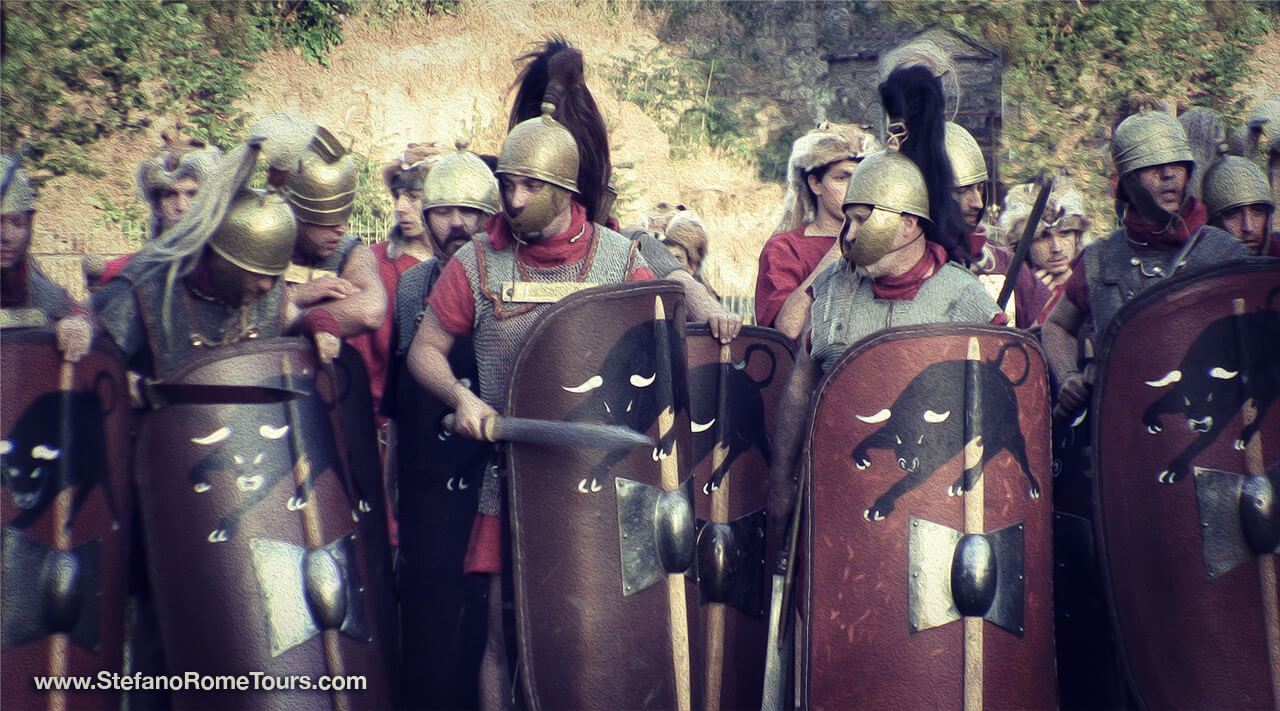
In the subsequent years, Christianity experienced a remarkable transformation. It evolved from a persecuted minority to the state religion of the Roman Empire. The reign of Emperor Theodosius I in the late 4th century CE saw Christianity officially declared as the state religion, leading to the suppression of pagan practices and temples.
While the establishment of Christianity as the state religion brought a sense of religious unity to the empire, it also created divisions within society. The Christian community itself was not homogeneous, as theological disputes and doctrinal differences emerged. These divisions sometimes led to conflicts and schisms within the empire, further weakening its cultural and religious unity.
The rise of Christianity also brought about changes in societal values and norms. Christian teachings emphasized humility, compassion, and the importance of an afterlife, which contrasted with the values of Roman society that placed significance on honor, wealth, and power. This cultural shift had a profound impact on the social fabric of the empire.
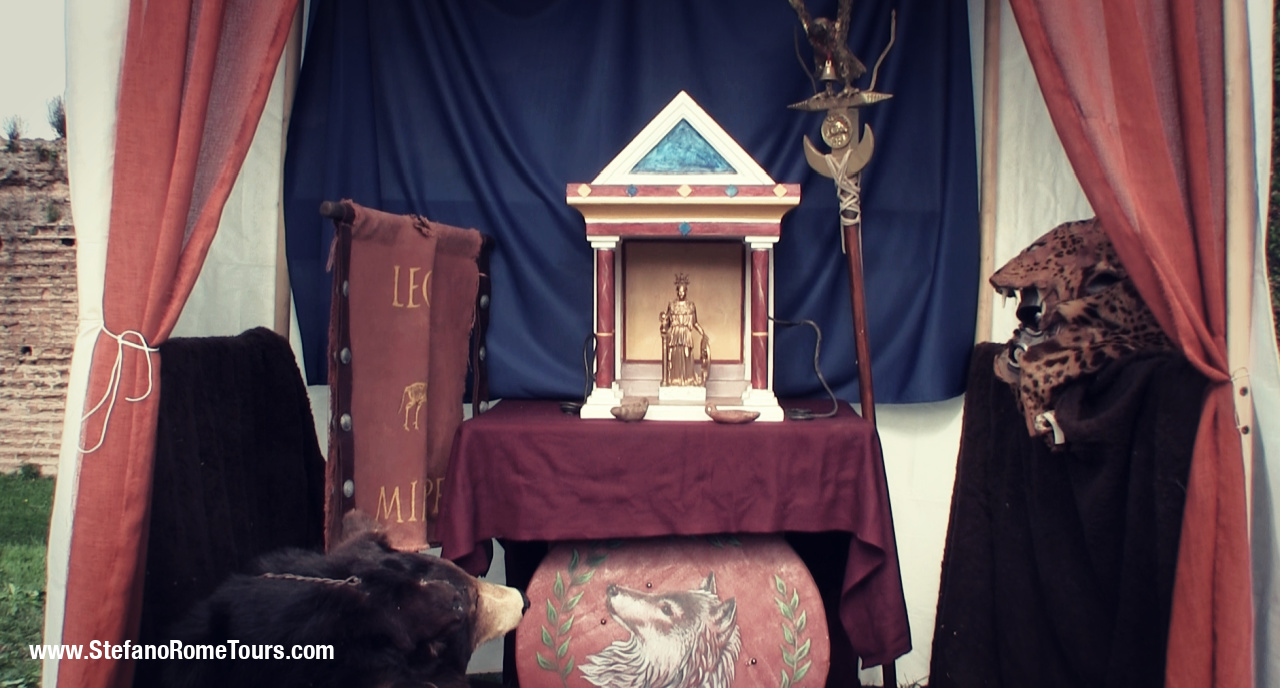
Christianity also created a shift in military values. The Roman military had a strong connection with Roman polytheism, often invoking the gods for victory in battle. With the rise of Christianity and the decline of traditional Roman religious practices, the military lost a significant aspect of its religious motivation and spiritual support. This change in religious orientation may have impacted the soldiers' sense of purpose and morale.
Christian teachings emphasized nonviolence, forgiveness, and turning the other cheek, which posed challenges for soldiers whose duty was to engage in warfare and protect the empire. Some Christians within the military struggled with reconciling their faith with the demands of their profession, leading to debates and tensions surrounding military service. The moral qualms and conflicts arising from Christian beliefs could have deterred potential recruits, leading to a decline in the pool of available soldiers. This decline in recruitment may have weakened the military's strength and effectiveness.
Furthermore, as the empire faced numerous challenges, the vitality of Roman literature, art, and intellectual pursuits waned. The once-thriving cultural life of the empire diminished, giving way to a more fragmented and less cohesive cultural landscape.
External Threats:
External threats played a significant role in the decline and eventual fall of the Roman Empire. In addition to the barbarian invasions, the empire faced formidable adversaries that put tremendous pressure on its military and resources.
One of the prominent external threats to the Roman Empire was the Sassanian Empire in Persia (modern-day Iran). The Sassanian Empire emerged as a powerful force in the 3rd century CE and engaged in several conflicts with the Eastern Roman Empire. These conflicts, known as the Roman-Persian Wars, were characterized by territorial disputes, border conflicts, and intense military confrontations. The Sassanians, with their well-organized and professional army, posed a persistent threat to the Eastern Roman Empire, leading to significant military expenditures and resource drain.
Another major external threat to the Roman Empire was the Huns, a nomadic confederation from Central Asia led by their fearsome leader, Attila. The Huns emerged as a formidable force in the 5th century CE and launched a series of devastating invasions across the empire's frontiers. Attila, known as the "Scourge of God," led the Huns in their attacks on both the Eastern and Western Roman Empires. The Huns' military prowess and their ability to rapidly mobilize large armies posed a significant challenge to the already strained Roman military forces.
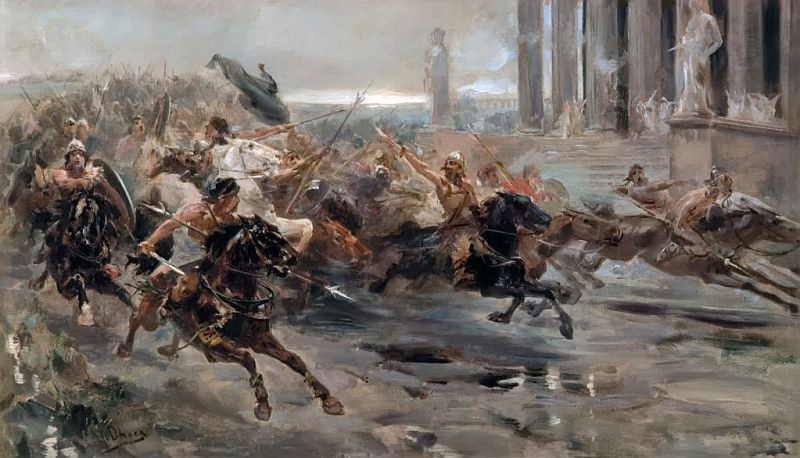
These external threats strained the Roman military's capabilities and exhausted vital resources. The empire had to divert significant manpower and resources to defend its borders and counter these formidable adversaries. The constant need for military campaigns, fortifications, and defense mechanisms placed a considerable burden on the empire's economy and infrastructure. The financial strain, coupled with the loss of vital territories and resources to invasions, further weakened the empire's ability to sustain itself and maintain its military strength.
Moreover, the external threats contributed to a state of perpetual warfare and instability along the empire's frontiers. The constant need for military engagement and defense against external forces hindered the empire's ability to focus on internal stability and governance. It created a cycle of military expenditure, depletion of resources, and further vulnerability to subsequent attacks.
What was the final blow associated with the destruction of the Western Roman Empire?
The final blow that is often associated with the destruction of the Western Roman Empire is the deposition of Romulus Augustus, the last Western Roman Emperor, by Odoacer, a Germanic chieftain, in 476 CE. This event marked the formal end of the Western Roman Empire. Ironically, Rome started with its first king Romulus, and ended with its final emperor also names Romulus.
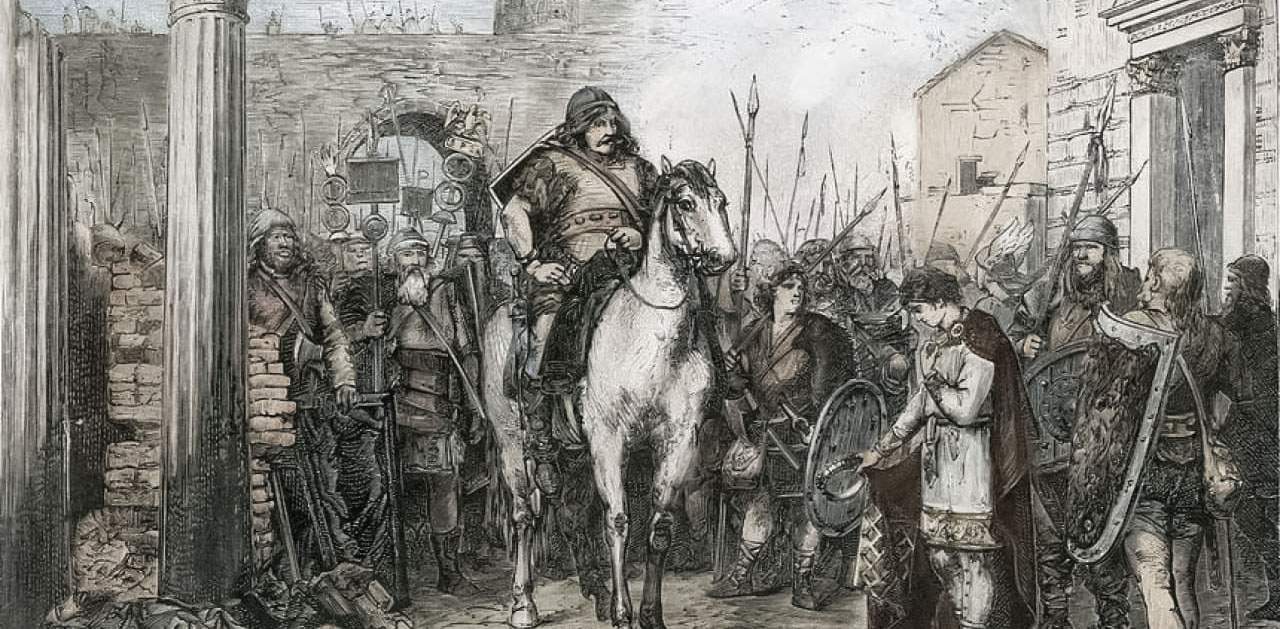
Romulus Augustus was a young and ineffective ruler, and his deposition was a culmination of a series of political and military challenges that had plagued the empire for decades. By this point, the Western Roman Empire had been significantly weakened, with its territories fragmented and under the control of various barbarian groups.
The deposition of Romulus Augustus is often seen as a symbolic moment rather than the singular cause of the empire's fall. It represented the final loss of imperial authority in the West and signaled the transfer of power to barbarian leaders.
In conclusion, the decline and fall of the Roman Empire was a complex and gradual process that lasted centuries and it wasn't one single event. It is worth noting that the fall of the Western Roman Empire did not lead to the complete disappearance of Roman culture and heritage. The Eastern Roman Empire continued as the Byzantine Empire and preserved many aspects of Roman civilization for centuries. Furthermore, the influence of Roman law, language (Latin), and culture continued to shape Western Europe and its subsequent civilizations.
Discover the Ancient Marvels of Rome with Stefano Rome Tours
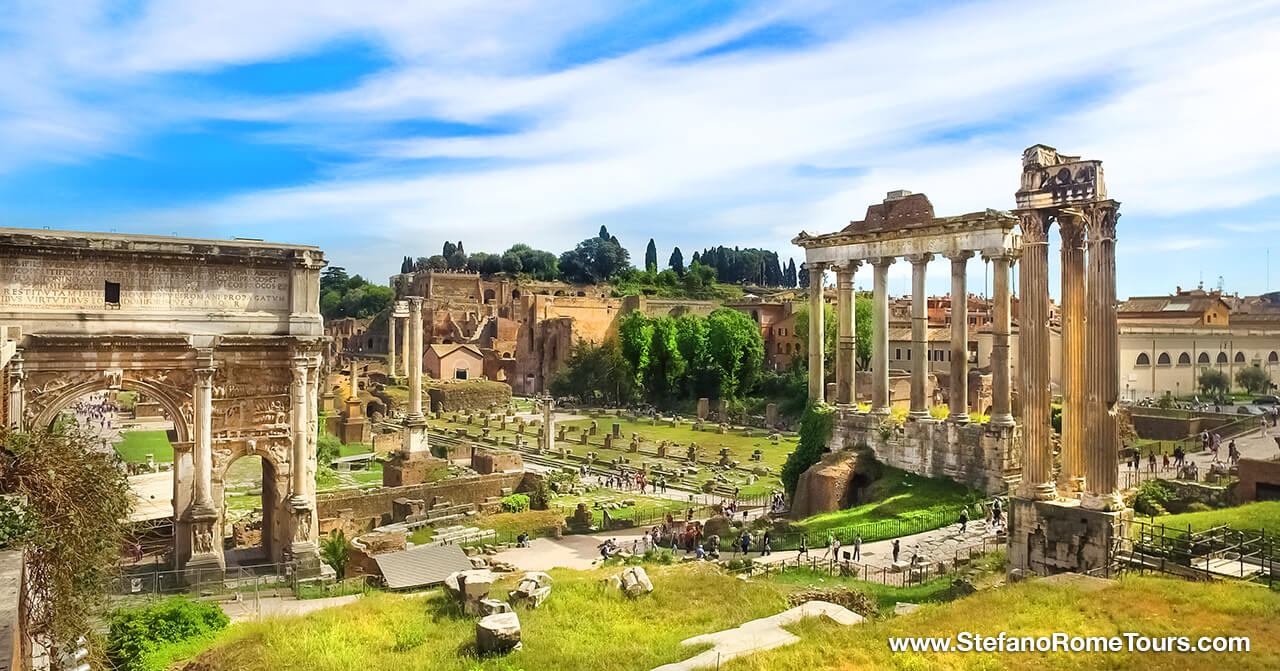
Many of the glories of the Roman Empire are still evident in Rome, waiting to be explored on our private tours of Rome. Imagine standing in the imposing shadow of the Colosseum, wandering through the ancient ruins of the Roman Forum, or gazing in awe at the intricate beauty of the Pantheon.
Our Rome tours offer a rare opportunity to experience these iconic landmarks up close, connecting with the spirit of the ancient world and gaining a profound understanding of the rise and fall of the Roman Empire.
Colosseum:
One of the Seven Wonders of Ancient Rome, the iconic Colosseum is the largest amphitheater built during the Roman Empire. It hosted grand spectacles, including gladiator fights, animal hunts, and mock naval battles. Explore the ancient ruins and imagine the roar of the crowds that once filled this magnificent structure.
Roman Forum:
Adjacent to the Colosseum lies the Roman Forum, the political and social center of ancient Rome. Stroll through the ruins of temples, basilicas, and government buildings. This was where public speeches were given, elections were held, and the heart of Roman civic life beat.
Palatine Hill:
Just above the Roman Forum, Palatine Hill offers stunning views of the city and was the site of the imperial palaces. Explore the remnants of luxurious residences where emperors, such as Augustus and Domitian, lived. Admire the beautifully preserved frescoes in the House of Augustus and the House of Livia.
Pantheon:
The awe-inspiring Pantheon is a marvel of Roman engineering. Built as a temple to the gods, it features a magnificent dome with an oculus at the center. Take a moment to appreciate the grandeur of this architectural masterpiece, which has served as a model for centuries.
Trajan's Column and Forum:
Built to commemorate Emperor Trajan's victories, Trajan's Column is a towering monument adorned with detailed reliefs depicting military campaigns in Dacia (modern-day Romania). Nearby, the ruins of Trajan's Forum provide a glimpse into the grandeur of ancient Roman architecture.
Baths of Caracalla:
Step into the world of ancient Roman leisure and visit the Baths of Caracalla. These sprawling public baths were an essential part of Roman social life. Marvel at the massive structures, including the frigidarium (cold room), caldarium (hot room), and natatio (swimming pool).
Circus Maximus:
See the Circus Maximus, an ancient chariot racing stadium. Imagine the excitement and cheers of the crowds as charioteers raced around the track, competing for victory. While the original structure is mostly gone, you can still see the outlines of the track and soak in the historical atmosphere.
Ancient Appian Way:
Take a trip along the ancient Appian Way, one of the most important Roman roads. Explore the well-preserved sections and admire the ancient tombs that line the road. This route once connected Rome to the southern regions of Italy, playing a crucial role in Roman expansion and trade.
Ostia Antica:
Venture to Ostia Antica on a tour from Rome, the ancient port city of Rome. Explore the well-preserved ruins of this once-thriving commercial hub, including the amphitheater, baths, temples, and residential buildings. It offers a fascinating glimpse into daily life during the Roman Empire.
Stefano Rome Tours is your trusted companion in uncovering the secrets of the past and creating unforgettable memories on our private tours of Rome. Get ready to embark on an extraordinary adventure as we unveil the echoes of the mighty Roman Empire.
